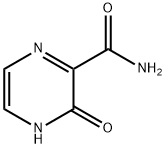3-Hydroxypyrazine-2-carboxamide: activities, applications and safety
Dec 14,2023
General Description
3-Hydroxypyrazine-2-carboxamide, also known as nicotinamide mononucleotide (NMN), has a range of potential applications in medicine and biotechnology. It has been shown to increase levels of NAD+, which is involved in cellular processes such as energy production and DNA repair, and thus has potential as an anti-aging supplement and treatment for various medical conditions. Additionally, 3-Hydroxypyrazine-2-carboxamide has demonstrated antiviral activity against a range of RNA viruses. However, caution must be exercised in its use due to potential side effects and drug resistance. The compound is considered an irritant and should be handled with care.
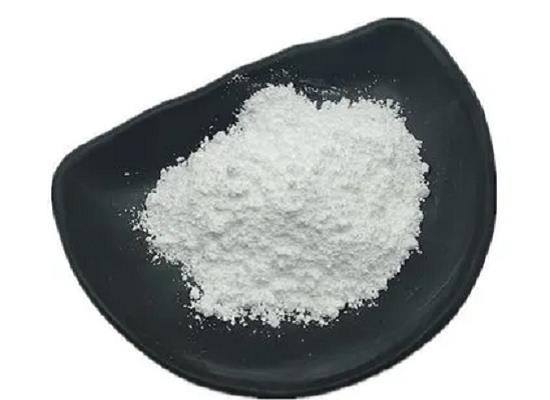
Figure 1. 3-Hydroxypyrazine-2-carboxamide
Activities
3-Hydroxypyrazine-2-carboxamide is a broad-spectrum antiviral agent that inhibits RNA virus polymerase by converting into a metabolite of ribonucleotide triphosphate (RTP). This drug has demonstrated antiviral activity against a range of RNA viruses, including Zika virus (ZIKV), influenza virus, sandfly fever virus, Bunia virus, West Nile virus (WNV), yellow fever virus (YFV), and foot-and-mouth disease virus (FMDV). The mechanism of action is through inhibition of viral RNA-dependent RNA polymerase, which is essential for viral replication. 3-Hydroxypyrazine-2-carboxamide can be formed by nicotinamide adenine dinucleotide (NAD) adenylyltransferase. However, the efficacy of 3-Hydroxypyrazine-2-carboxamide may vary based on the type of virus and stage of infection. Further studies are needed to fully understand the potential of 3-Hydroxypyrazine-2-carboxamide as an antiviral agent. Despite its promising activity, caution must be exercised in the use of 3-Hydroxypyrazine-2-carboxamide due to potential side effects and drug resistance. 1
Applications
3-Hydroxypyrazine-2-carboxamide is a molecule with a variety of applications in the fields of medicine and biotechnology. One of the most well-known applications of 3-Hydroxypyrazine-2-carboxamide is its potential use as an anti-aging supplement. NMN is believed to increase levels of nicotinamide adenine dinucleotide (NAD+), a molecule that is involved in many cellular processes, including energy production and DNA repair. As we age, NAD+ levels decline, which can lead to a variety of age-related health problems. By increasing NAD+ levels, 3-Hydroxypyrazine-2-carboxamide may be able to slow down or even reverse some of these effects. In addition to its anti-aging properties, 3-Hydroxypyrazine-2-carboxamide has also been investigated for its potential use in treating a variety of medical conditions, including diabetes, obesity, and cardiovascular disease. It has been shown to improve insulin sensitivity, reduce inflammation, and increase blood flow, among other benefits. Finally, 3-Hydroxypyrazine-2-carboxamide is also used in biotechnology research as a tool for studying cellular metabolism and aging. Its ability to increase NAD+ levels has made it a valuable tool for investigating the underlying mechanisms of aging and age-related diseases. Overall, 3-Hydroxypyrazine-2-carboxamide has a wide range of potential applications in both medicine and biotechnology, and its continued study and development may lead to new treatments and insights into aging and disease. 2
Safety
3-Hydroxypyrazine-2-carboxamide is a chemical compound that presents some safety hazards. According to the GHS classification, it is considered an irritant, which means it can cause skin and eye irritation. It may also cause respiratory irritation if inhaled. The hazard statements associated with this compound indicate that it should be handled with care to avoid exposure. Precautionary measures such as wearing protective gear, including gloves and goggles, and working in a well-ventilated area are recommended. Skin irritation and eye irritation are the hazard classes and categories assigned to 3-Hydroxypyrazine-2-carboxamide. This indicates that the compound has the potential to cause moderate to severe irritation to the skin and eyes upon contact. Additionally, STOT SE 3 category suggests that the compound may cause specific target organ toxicity, which in this case is the respiratory tract. It is important to note that the safety information provided is based on the pure compound and may vary depending on the concentration, purity, and how the substance is handled, stored, or used. Therefore, it is essential to follow the proper safety protocols and procedures when handling and using 3-Hydroxypyrazine-2-carboxamide to ensure its safe use. 3
Reference
1. Nakayama T, Honda R. Electrochemical and Mechanistic Study of Oxidative Degradation of Favipiravir by Electrogenerated Superoxide through Proton-Coupled Electron Transfer. ACS Omega. 2021 Aug 11;6(33):21730-21740.
2. Gowen BB, Wong MH, Jung KH, Smee DF, Morrey JD, Furuta Y. Efficacy of favipiravir (T-705) and T-1106 pyrazine derivatives in phlebovirus disease models. Antiviral Res. 2010 May;86(2):121-127.
3. 3-Hydroxypyrazine-2-carboxamide. European Chemicals Agency, EC / List no. 676-589-9.
- Related articles
- Related Qustion
- 3-Hydroxypyrazine-2-carboxamide——Indication, Mechanism of action, Preparation etc. Oct 22, 2021
3-Hydroxypyrazine-2-carboxamide belongs to the intermediate categories of Intermediates & Fine Chemicals; Pharmaceuticals; Amines; Aromatics; Heterocycles. This chemical’s molecular formula is C5 H5 N3 O2 and molecular weight is 139.11.
Supplementation with pyridoxal 5'-phosphate monohydrate can synthesize neurotransmitters such as dopamine and serotonin, maintaining a healthy nervous system.....
Nov 4,2025Biochemical Engineering2,2'-Bipyridyl-5,5'-dialdehyde is a versatile compound used in catalysis, and materials science due to its unique properties. Proper handling is required due to its irritant classification.....
Dec 14,2023API3-HYDROXYPYRAZINE-2-CARBOXAMIDE
55321-99-8You may like
3-HYDROXYPYRAZINE-2-CARBOXAMIDE manufacturers
- T-1105
-
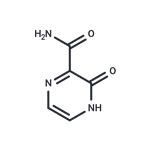
- $29.00 / 1g
- 2025-12-05
- CAS:55321-99-8
- Min. Order:
- Purity: 99.57%
- Supply Ability: 10g
- 3-HYDROXYPYRAZINE-2-CARBOXAMIDE
-
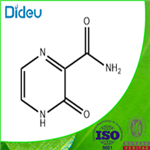
- $1.10 / 1g
- 2025-11-18
- CAS:55321-99-8
- Min. Order: 1g
- Purity: 99.00%
- Supply Ability: 100 Tons
- 3-Hydroxypyrazine-2-Carboxamide
-
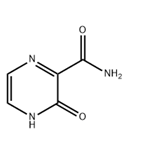
- $0.00 / 1KG
- 2025-04-04
- CAS:55321-99-8
- Min. Order: 1KG
- Purity: 98%
- Supply Ability: 1Ton






